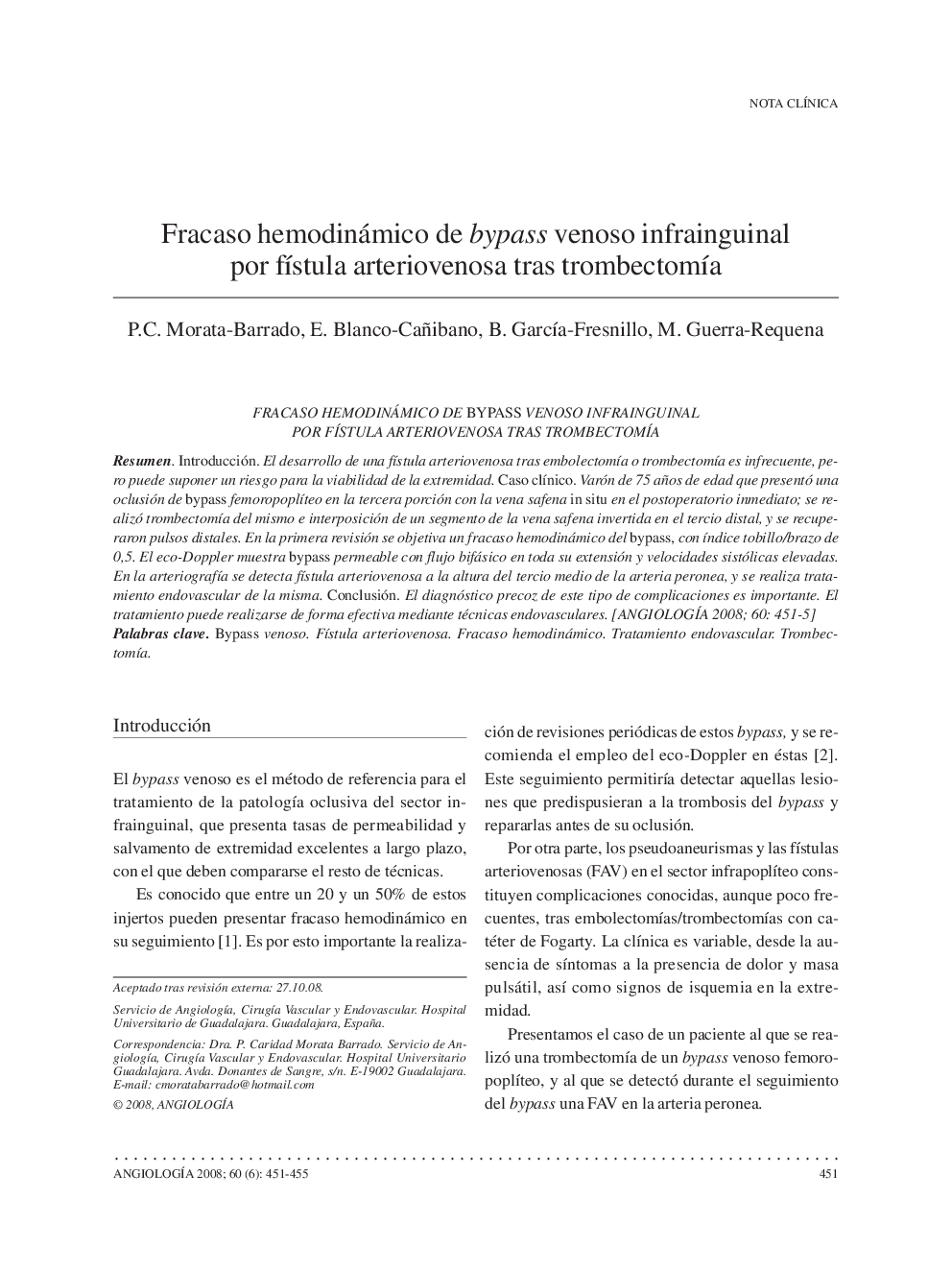| Article ID | Journal | Published Year | Pages | File Type |
|---|---|---|---|---|
| 2867929 | Angiología | 2008 | 5 Pages |
FRACASO HEMODINÁMICO DE BYPASS VENOSO INFRAINGUINAL POR FÍSTULA ARTERIOVENOSA TRAS TROMBECTOMÍAResumenIntroducción. El desarrollo de una fístula arteriovenosa tras embolectomía o trombectomía es infrecuente, pero puede suponer un riesgo para la viabilidad de la extremidad. Caso clínico. Varón de 75 años de edad que presentó una oclusión de bypass femoropoplíteo en la tercera porción con la vena safena in situ en el postoperatorio inmediato; se realizó trombectomía del mismo e interposición de un segmento de la vena safena invertida en el tercio distal, y se recuperaron pulsos distales. En la primera revisión se objetiva un fracaso hemodinámico del bypass, con índice tobillo/brazo de 0,5. El eco-Doppler muestra bypass permeable con flujo bifásico en toda su extensión y velocidades sistólicas elevadas. En la arteriografía se detecta fístula arteriovenosa a la altura del tercio medio de la arteria peronea, y se realiza tratamiento endovascular de la misma. Conclusión. El diagnóstico precoz de este tipo de complicaciones es importante. El tratamiento puede realizarse de forma efectiva mediante técnicas endovasculares. [ANGIOLOGÍA 2008; 60: 451-5]
HAEMODYNAMIC FAILURE OF ANINFRAINGUINAL VENOUS BYPASS DUE TO ARTERIOVENOUS FISTULA FOLLOWING A THROMBECTOMYSummaryIntroduction. Development of an arteriovenous fistula following an embolectomy or thrombectomy is infrequent, but can put the viability of the limb at risk. Case report. A 75-year-old male who presented an occlusion of a femoropopliteal bypass in the third portion with the saphenous vein in situ in the immediate post-operative period; a thrombectomy and placement of the segment of the inverted saphenous vein in the distal third were performed, and distal pulses were recovered. In the first control examination, haemodynamic failure of the bypass was observed, with an ankle-brachial index of 0.5. A Doppler ultrasound recording showed the bypass to be patent with a two-phaseflow along the whole of its length and high systolic velocities. An arteriography revealed an arteriovenous fistula in the middle third of the peroneal artery, which was treated by endovascular methods. Conclusions. An early diagnosis of this type of complications is important. Treatment can be performed effectively by means of endovascular techniques. [ANGIOLOGÍA 2008; 60: 451-5]
